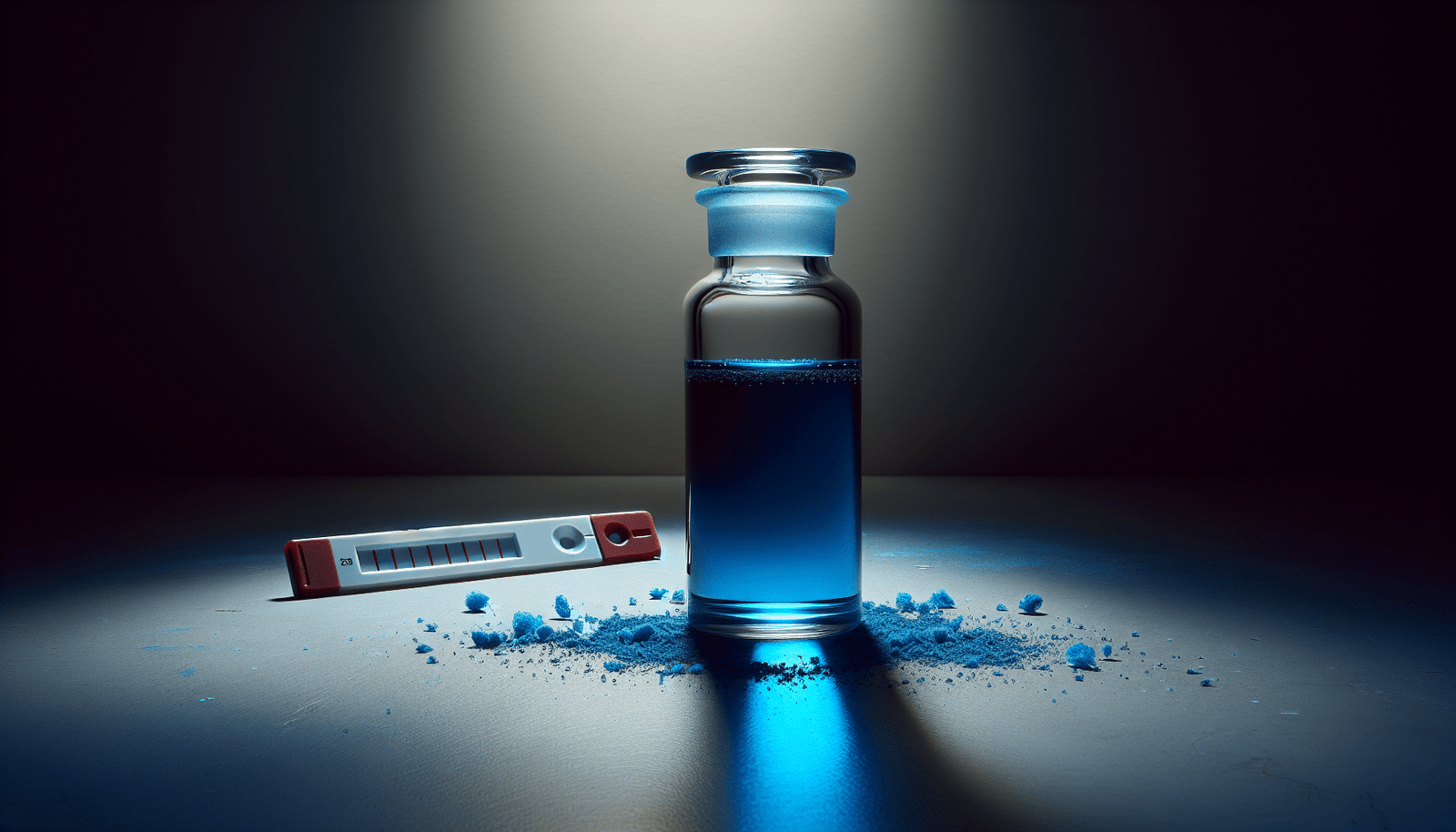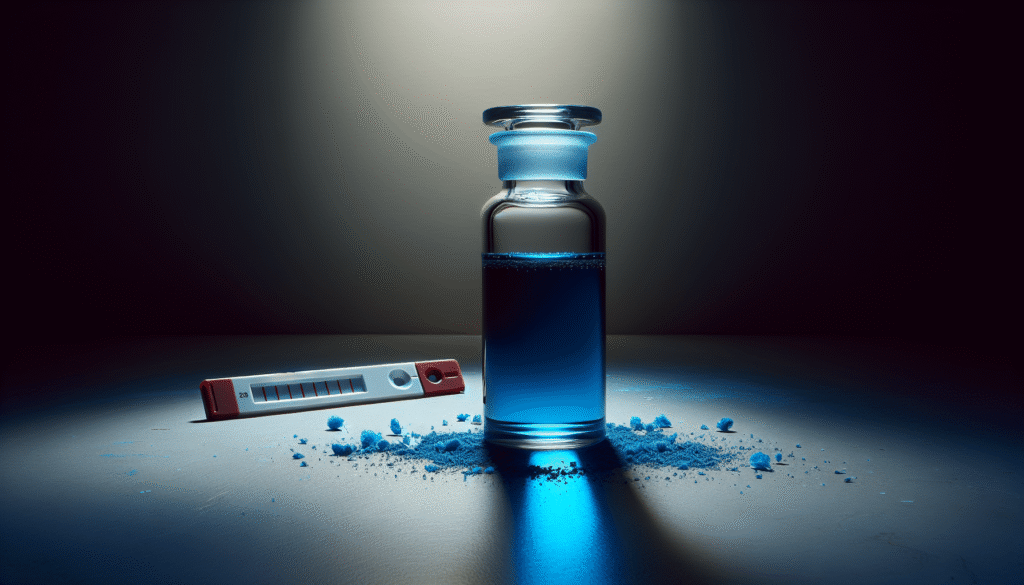
What do you know about Methylene Blue and its potential impact on drug testing? While it is not commonly discussed in mainstream conversations, Methylene Blue plays an intriguing role in the fields of medicine and toxicology, particularly concerning drug tests. In the following sections, we will unpack the complexities surrounding Methylene Blue, its uses, interactions with drug tests, and implications for individuals who may encounter this substance.
Understanding Methylene Blue
Methylene Blue is an organic compound with a rich history in both medical and industrial applications. Originally synthesized in the late 19th century, it has evolved from a dye to a critical therapeutic agent in various fields.
Historical Significance
The compound was initially developed for use as a dye in textiles. However, soon after its introduction, researchers discovered its efficacy in medicine. It was used to treat malaria, and even in modern medicine, it has found relevance in treating methemoglobinemia, a condition where the blood cannot effectively transport oxygen.
Chemical Properties
Methylene Blue is a thiazine dye, recognizable by its deep blue color. Its chemical name is methylthioninium chloride, and it has the molecular formula C16H18ClN3S. Its unique chemical structure allows it to interact with various biological systems, which is why it is of interest in pharmacology and toxicology.
Medical Uses of Methylene Blue
Methylene Blue’s applications in medicine are varied and important. It acts primarily as a medication and a diagnostic tool in clinical settings.
Treatment of Methemoglobinemia
One of the most significant medical uses of Methylene Blue is in treating methemoglobinemia. This condition can arise from exposure to certain drugs or chemicals, leading to a deficiency in oxygen transport. Methylene Blue works by converting methemoglobin back to hemoglobin, thus restoring the blood’s oxygen-carrying capacity.
Antidote for Poisoning
Methylene Blue is also employed as an antidote for cyanide poisoning. When administered in a controlled setting, it can help restore mitochondrial function and aid in the detoxification process.
Role in Surgical Procedures
In some surgical procedures, Methylene Blue is used as a dye to help visualize certain anatomical structures. This application is particularly valuable in procedures such as sentinel lymph node biopsy, where the dye assists in identifying lymphatic drainage patterns.

Methylene Blue and Drug Testing
As the landscape of drug testing evolves, understanding how substances like Methylene Blue interact with drug tests is essential.
Mechanism of Action
Methylene Blue influences various metabolic pathways in the body. It can affect the liver’s enzymes and may interact with the kidneys in drug metabolism. Understanding these mechanisms is crucial when considering drug testing outcomes.
Impact on Urine Tests
One of the most common forms of drug testing is urine analysis. Methylene Blue can introduce complexities in interpreting these tests. For instance, it may alter the color of urine, potentially leading to false positives or the misinterpretation of results.
| Test Type | Possible Outcomes with Methylene Blue |
|---|---|
| Urine Drug Screen | Color alteration; potential false positives for amphetamines or other substances |
| Blood Tests | Variable effects depending on testing methodology |
| Hair Follicle Tests | Minimal impact, as Methylene Blue does not typically remain in hair follicles |
Altered Metabolization of Other Drugs
Methylene Blue may influence how the body metabolizes other drugs, especially antidepressants or medications that rely on the cytochrome P450 enzyme system. This can complicate drug testing, as the presence of Methylene Blue may enhance or inhibit the concentration of these substances in the body.
Misinterpretation Risks
The presence of Methylene Blue in a drug test can lead to significant misinterpretation of results. Understanding the potential pitfalls in interpretation is critical for healthcare providers and individuals alike.
False Positive Results
One of the major concerns with Methylene Blue is its potential to yield false positive results in drug screenings. Drugs such as amphetamines and certain antidepressants may trigger positive readings in individuals who have recently used Methylene Blue.
Detection Timeframes
Methylene Blue typically remains detectable in the body for a short period, depending on the method of administration (oral, intravenous, etc.). Although it may not be a long-term concern, those undergoing drug testing should be aware of its presence if they have recently used it.
Confounding Variables
Factors such as hydration levels, dietary habits, and individual metabolism can further complicate drug testing results when Methylene Blue is involved. It’s helpful to consider these variables when interpreting outcomes.
Therapeutic Benefits vs. Testing Challenges
The therapeutic applications of Methylene Blue are clear, yet the challenges it presents during drug testing cannot be understated.
Balancing the Benefits
Methylene Blue offers a range of therapeutic benefits for individuals with severe medical conditions. It is widely used in hospitals and clinical settings where its benefits far outweigh the risks associated with drug testing complications.
Addressing Drug Testing Concerns
To mitigate the risks of misinterpretation in drug testing, it is advisable for individuals prescribed Methylene Blue to disclose its use prior to any testing. Healthcare providers can take this information into account, ultimately leading to more accurate conclusions.
Conclusion
In summary, Methylene Blue is a compound with important therapeutic applications, but its role in drug testing introduces potential challenges that cannot be ignored. Understanding how Methylene Blue works, its effects on the body, and its implications on drug testing is crucial for healthcare professionals and patients alike.
Future Research Directions
Continued research is needed to better understand the interaction of Methylene Blue with drug tests. As drug testing technologies evolve, a clearer picture of how substances like Methylene Blue influence outcomes will be essential for both patient safety and accuracy in medical diagnostics.
As you consider the complexities of Methylene Blue and drug testing, it is vital to share information with healthcare professionals and remain informed about any medications you may be taking. This ensures that you are best prepared to navigate the potential challenges it may present.